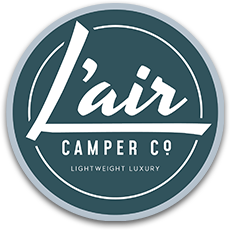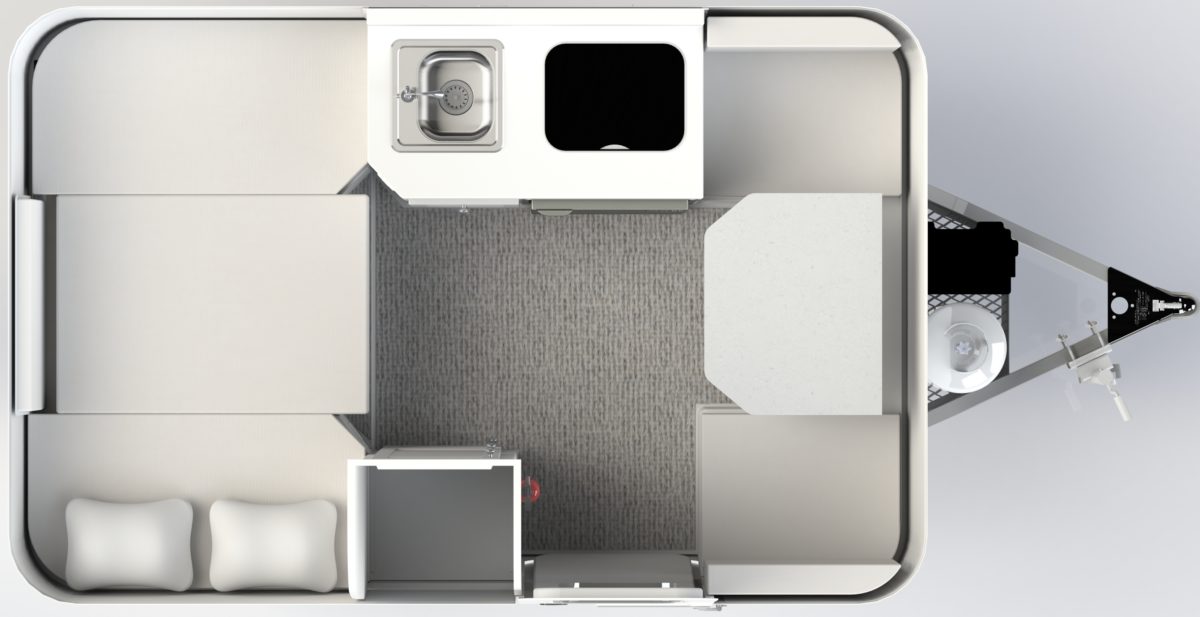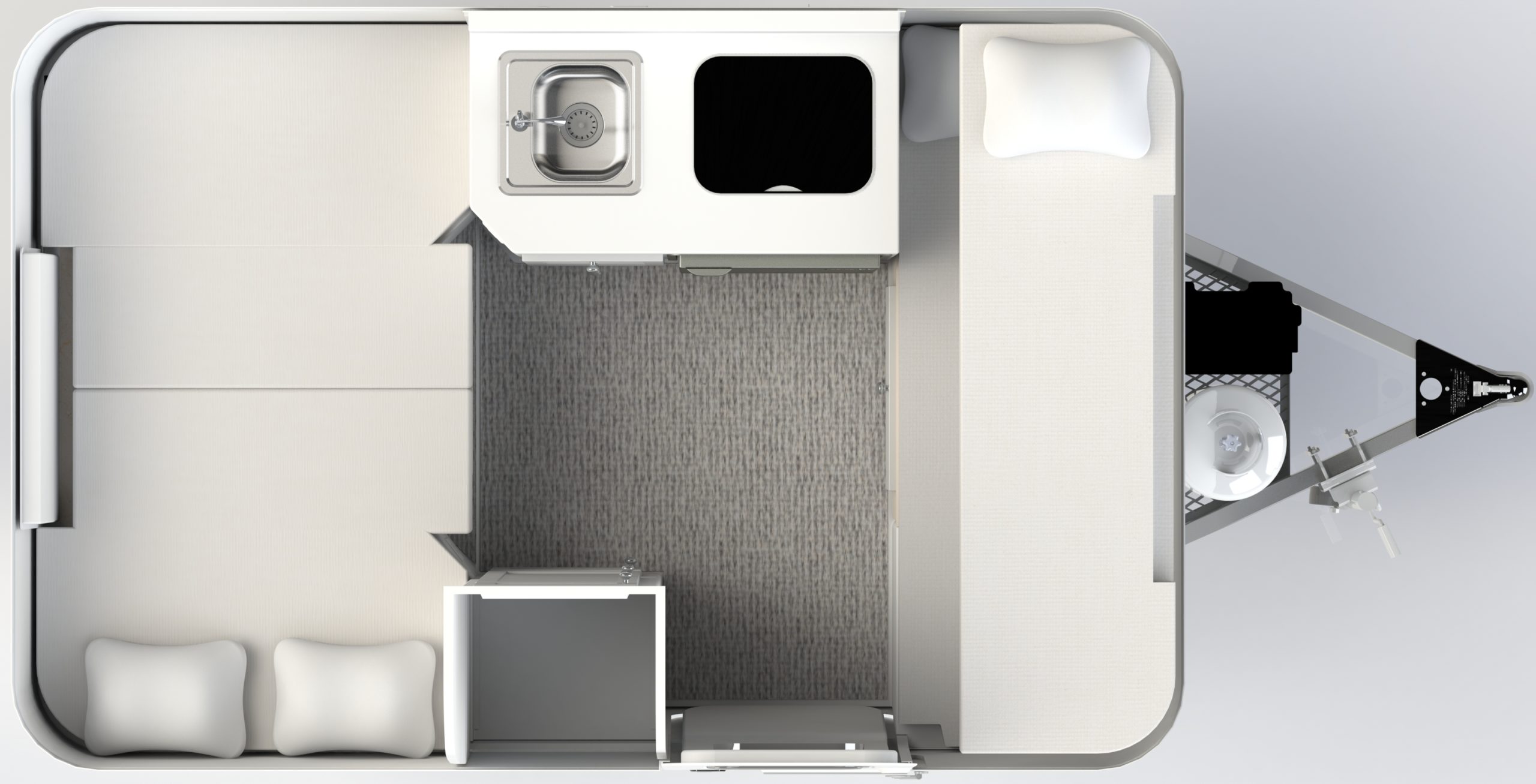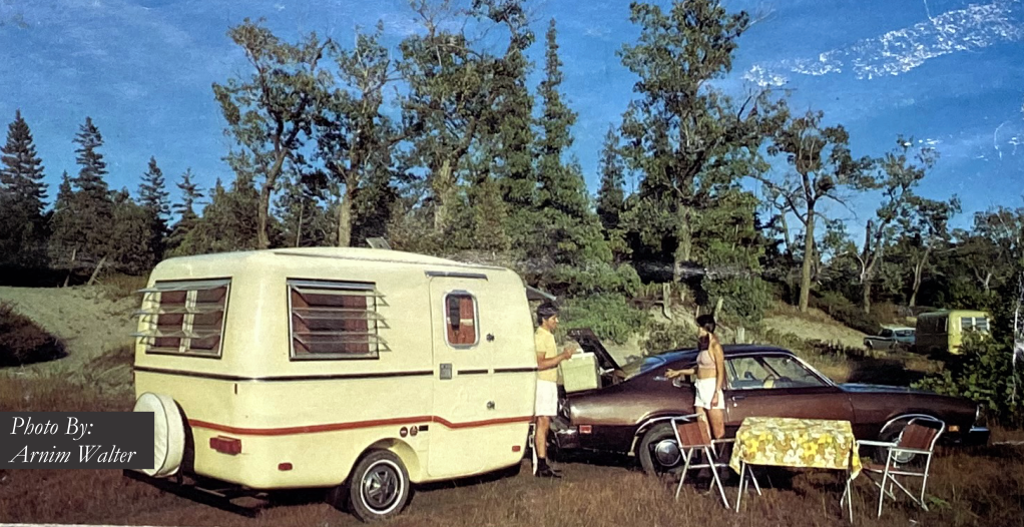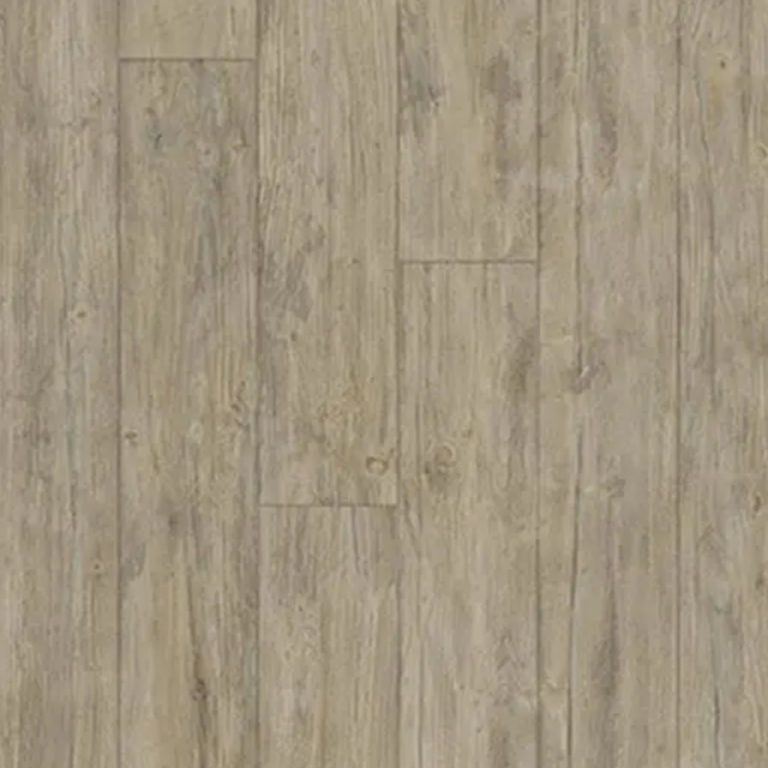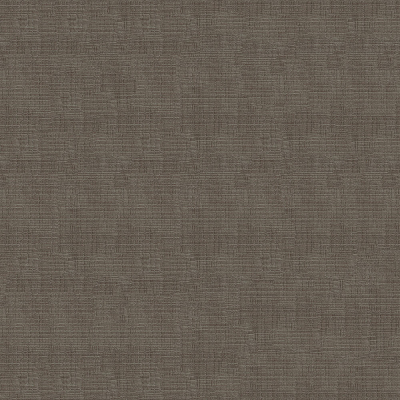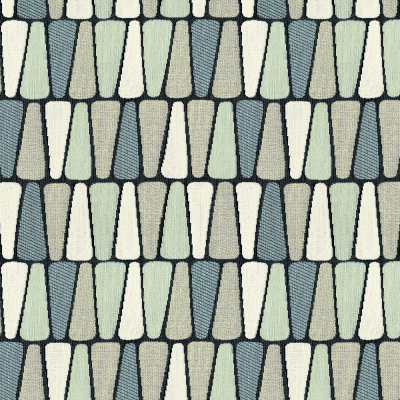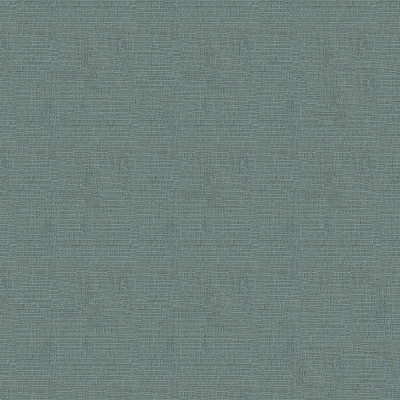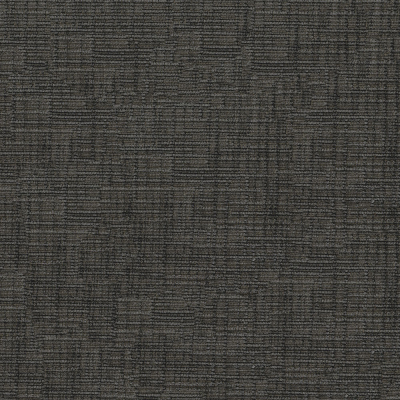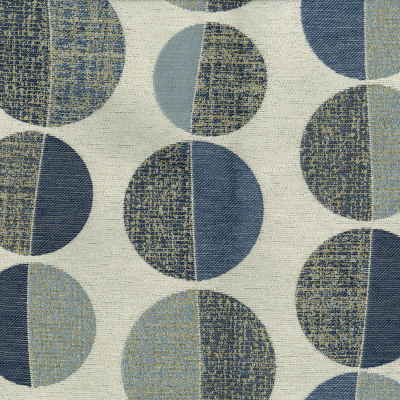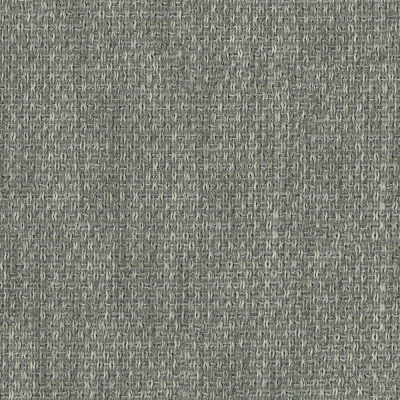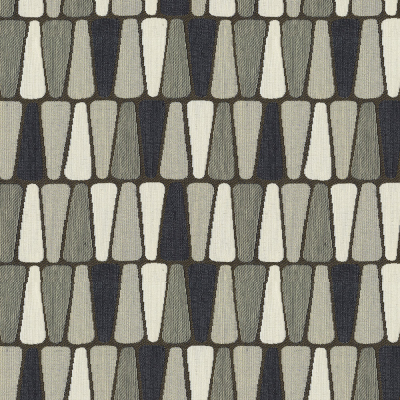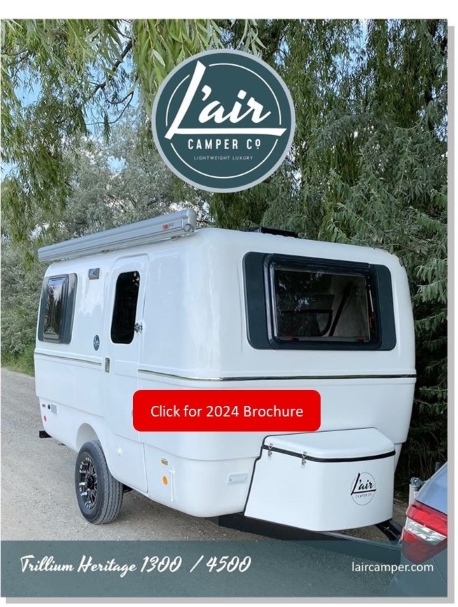Sooner or later, everything old is new again!
Your lightweight and economical gateway to the great outdoors.
Easily towed by most family vehicles, a Trillium camper holds all the basic amenities needed to be comfortable while enjoying the outdoors. Created back in the 1970’s our new Trillium Heritage series models are available with several options.
The Trillium History
Back in the early 1970’s, Trillium Industries were building their signature camper trailers in a 60,000 sq ft production facility in Markham, Ontario. Early brochures describe these trailers as being like a nutshell, with the upper and lower fiberglass halves being chemically bonded together to make the camper light weight, durable, and resistant to the elements. Many of the original Trillium trailers are still out there being sold and used today. There has been renewed interest in these retro-style trailers by todays campers because of the unique features they offer as well as their good looks.
Easily towed by most family vehicles, a Trillium camper held all the basic amenities needed to be comfortable while enjoying the outdoors, available as either a 13′ or 15′ model. Original models featured the options of a refrigerator, toilet, kitchen and air conditioning, with their ‘Seal of Excellence’ displayed on the side of every trailer.
Options
Fabrics (Choose 1 or 2)










Features
There are plenty of ways to make your new Trillium Camper fit your camping style!
Interior Features
Sleeping Capacity | 3 / 4 with Optional Bunk Beds |
Bed Type | Comfort Foam – 46″ or 54″ x 76″ / 29″ x 76″ |
Windows | 5 w/Front and Rear Egress Window |
MaxxAir Fan | STD |
Heating | Optional Electric or Propane |
LED Interior Lighting | 7 Individually Switched Fixtures |
Zip-In Screen Door | Optional |
Indoor/Outdoor Carpet | STD |
Convertible Dinette | Rear (Seats 4)/Front (Seats 2) |
Euro Screen / Shades | STD |
Refrigerator | 4.2 cu.ft. with freezer – DC |
Kitchen Sink | 15″ Stainless Steel – Water PKG |
Water-Saver Faucet | Incl. w/ Base Water PKG |
Cooktop | Optional 2 Burner LPG |
Tank Monitoring System | Optional |
Microwave | Optional |
110V Outlets | STD – 2 Outlets |
USB Charging Ports | STD – 2 ports |
Counter Extension | Standard units only |
Inverter | 2,000 Watt – Optional |
Water Heater | Optional |
Toilet | Optional |
Shower | Optional Outdoor Shower |
Exterior Features
Tubular Steel Frame | STD with 2″ Ball Coupler and Chains |
Aluminum Rims | STD |
Tire Size | 205 / 75R15 |
Torsion Axle Suspension | STD |
Tongue Jack w/Wheel | STD w/ Removable Wheel |
Rear Stabilizers | 2 |
Battery | Deep Cycle 100 aH, 12 Volt |
LED Hitch Light | STD |
LED Entrance Light | STD |
Fiberglass Propane & Battery Cover | Standard for 2024 |
City Water Inlet/Gravity Fill | STD |
Solar Power | Single Renogy 175W Panel with Charge Controller |
Trillium 1300 Specs
Exterior Length | 13’5″ |
Exterior Width | 6’6″ |
Interior Length | 9’10” |
Interior Height | 6’2″ |
Overall Height | 7’11″ |
Unit Base Weight | 1,350 lbs. |
Maximum Trailer Capacity (GVWR) (lbs.) | 2,200 lbs. |
Fresh Water Tank | 23 Gal incl. w/ Base Water PKG |
Grey Water Tank | 23 Gal incl. w/ Base Water PKG |
Power | 30 amp (L5-30R), 110V, Dog Bone Adapter Incl. |
Propane | Base Propane with RVQ – Optional |
Trillium 4500 Specs
Exterior Length | 15’2″ |
Exterior Width | 6’6″ |
Interior Length | 11’2″ |
Interior Height | 6’2″ |
Overall Height | 7’11″ |
Unit Base Weight | 1,650 lbs. |
Maximum Trailer Capacity (GVWR) (lbs.) | 2,700 lbs. |
Fresh Water Tank | 23 Gal incl. w/ Base Water PKG |
Grey Water Tank | 23 Gal incl. w/ Base Water PKG |
Power | 30 amp (L5-30R), 110V, Dog Bone Adapter Incl. |
Propane | Base Propane w/ RVQ – Optional |
Trillium Heritage FAQ
The layouts of the Trillium Heritage 1300 and 4500 are identical. The only difference between the two models is the length of the cabin, with the 4500 being 16” longer. The double bed is 8” wider and the galley and front bunk areas are approximately 6” and 2” wider, respectively.
Of course! Our campers meet North American Motor Vehicle Safety Standards and are easy to import. We provide you with the necessary documentation, including:
- S. DOT Form HS-7 for Customs Declaration
- Certificate of Origin
- Manufacturer’s Invoice
- NVIS Form (New Vehicle Information Statement)
- Certificate of Conformity (FMVSS conformity)
The VIN label affixed to our campers also indicates that your camper “conforms to all applicable U.S. Federal Motor Vehicle Safety Standards in effect at the time of manufacture”.
Some states require additional documentation, such as a Bill of Sale in the State format, or other declarations.
You can self-clear with CBP by starting here: https://help.cbp.gov/s/article/Article-415?language=en_US
Alternatively, you can use a broker who will file the necessary paperwork on your behalf for a fee.
The ground clearance on the 2024 Trillium Heritage campers is about 11”.
The two-drawer under-bunk dresser is standard on the Bunk Bed model and is modular. This means that when your kids are grown and you are camping with two adults, you can remove the dresser and configure the front section to the two-seat dinette as in the Standard layout. But wait, there’s more! You can also use the two-drawer dresser under the rear bunk to convert the rear dinette into a fixed bed. The fixed bed with the front dinette is a nice configuration for a couple. You can leave the bed made and eat at the table in front.
There is no cooktop or heater included in the basic camper.
If you want any propane appliances, you need to select the Base Propane system. The furnace, cooktop, and water heater are each individual options.
If you want to run without propane but potentially want to run a heating or cooking appliance from the battery, you would need the 2,000-watt inverter option. We caution that the basic battery and onboard solar combination is generally sufficient to run the refrigerator, LED lights, USB device charger, fan and water pump. That assumes that you are getting a reasonable amount of sun on your rooftop panel daily and that your battery is in good condition.
Any additional load on the battery, in particular a heating or cooking appliance, would require additional battery capacity and additional solar panels to provide the charge. When you are plugged in with the 30 Amp, 120 VAC power inlet, you are both charging the battery and able to run AC devices to the limit of the incoming power.
Electric brakes are standard on all L’air Camper Co. campers. Electric brakes take braking load away from the tow vehicle which affords better control of your camper. This is particularly true of smaller tow vehicles. In many jurisdictions, like Europe and Australia, the tow vehicle manufacturers consider brakes when estimating the braking load for the vehicles.
Yes. Electric brakes require a brake controller. The brake controller is like a dimmer switch for the brakes. If you just turned the brakes “on,” the camper wheels would lock up and skid. You want the brakes to come on “gradually” or proportionately for a controlled stop.
There are a few reasons that we don’t offer aluminum frames. In order to maintain the strength of the frame, we would have to use thicker walled aluminum tube, so any potential weight savings would be offset by the weight of the extra thickness. Then there is the issue of galvanic corrosion when different metals are in contact. Since we will continue using steel axles and couplers, we would have to insulate between the metals to mitigate the problem. Third, there aren’t as many shops that are good at welding aluminum, making any future repair more challenging. Finally, there is the issue of different materials having different thermal expansion coefficients.
Simply put, aluminum frames are less prone to corrosion, but they are expensive and offer few other benefits. A simple maintenance program will ensure that your steel frame lasts for decades. Even Trillium frames that didn’t get minimal maintenance over the years have stood up reasonably well.
The tongue weights of Trillium Heritage models fall in the 10-15% range. We do not publish specific numbers because options and configurations vary and more importantly, weight distribution is highly affected by the way you load your camper. We recommend that you familiarize yourself with proper loading techniques to ensure that you maintain a good tongue weight for safe towing.
Trailering safety is up to the individual owner and encompasses many factors. It comes down to care and control. In Europe, where they actually licence the vehicle and trailer combo and have towing speed limits, they will licence tow vehicle-trailer combinations at far lower than 10% tongue weight. In North America, where you can legally pull a trailer at up to 85MPH in some states, the sway factors can be more significant, and therefore, manufacturers and others recommend higher tongue weights.
Consider, for example, a customer has a tow vehicle for which the manufacturer is recommending a tongue weight of no more than 200 pounds. Should she want to run down the highway at 85MPH, more tongue weight is recommended – say 15% which would limit the total trailer weight to 1,335 pounds. On the other hand, the manufacturer lists 2,700 pounds towed vehicle capacity with the 200-pound tongue weight. That would be a 7.4% tongue weight. Great at 50, maybe 60 MPH, but not 85.
Anyway, it’s not as simple as a trailer or tow vehicle manufacturer spouting a number. We don’t list specific numbers but explain that the tongue weight is fully within the owner’s control, and they should be aware of that and of many other factors, like speed. On a much heavier camper, the owner’s behaviour has less impact on tongue weight, but can still be important.
The Lion stands about 4” taller than the standard versions, at about 6’ 6”.
We use a high quality White marine gel coat for our interior and exterior fiberglass finishes. White is the most weather resistant and will keep your camper looking great for many years. There are many ways to add colour or personalize your camper, including with a vinyl wrap or custom decal package available at hundreds of vinyl design shops across North America.
Each of our bespoke campers are hand-crafted by our trained craftspeople. From our beautiful and durable fiberglass camper bodies and interior components, to our premium upholstery interiors, each component is made in-house. We have a small but talented team. Occasionally someone is sick, or there is a supply issue. As some things are out of our control, we don’t make any specific promises about lead times, but we do guarantee that your camper will be produced in the sequence your order was received. When you are ready to place your order, we will be able to give you an estimated production date, but we do not guarantee those dates.
We conduct in-person and virtual tours of our factory by appointment only. We do require that we have prepared a quote for a camper customized to your specification prior to the tour. This ensures that you have given some thought to the options and features that most interest you and forces you to think of questions that you will undoubtedly have about our campers. We will be happy to requote a different set of options or model during or after the tour.
Virtual tours are maximum one hour and in-person tours are a maximum of two hours. We will be happy to answer as many questions as you have by e-mail both before and after the tour.
The tour is by appointment only so that we can focus on you for the allotted time.
You will never be pressured to buy our campers, but our process and terms are fixed.
Vehicle manufacturers make recommendations for tow ratings. You will find that many vehicles have different tow ratings for the exact same vehicle in different countries. Often, one vehicle will have two different ratings based on whether the trailer is braked or unbraked. Our campers have brakes.
The critical question for those contemplating their own tow vehicle is safety. No one cares how fast you go up the hill, but you need to be able to keep your vehicle and camper in control when coming down the hill.
There are many packaged hitch assemblies made for almost every vehicle and the companies that make them give them a tow limit. There are also many expert hitch fabricators that can create a hitch allowing almost any vehicle to tow well beyond what the manufacturer suggested. Click here for one example of a hitch expert: https://www.canamrv.ca/towing-expertise/faq/
Our Trillium Heritage campers have three layouts. Standard – Sleeps 3, Bunk-Bed – Sleeps 4 (150 pounds max. on top bunk) and the Bath Model – Sleeps 2
The top of the ball should be about 16” off the ground as measured with the tow vehicle sitting flat.
Our Trillium Heritage campers share the classic look of the campers made in the seventies, but there are dozens of improvements that have been incorporated into the new camper. Dual-pane, thermal windows, fully-bonded shells, improved frame design, 15” wheels, complete wiring harness, LED lighting, premium upholstery, and many other changes are incorporated into the modern Trillium Heritage camper.
At first glance it’s the old, look carefully and you see all of the new!
Ready to get started?
Contact us today to ask a question or begin the process of building your Trillium Heritage Camper.
